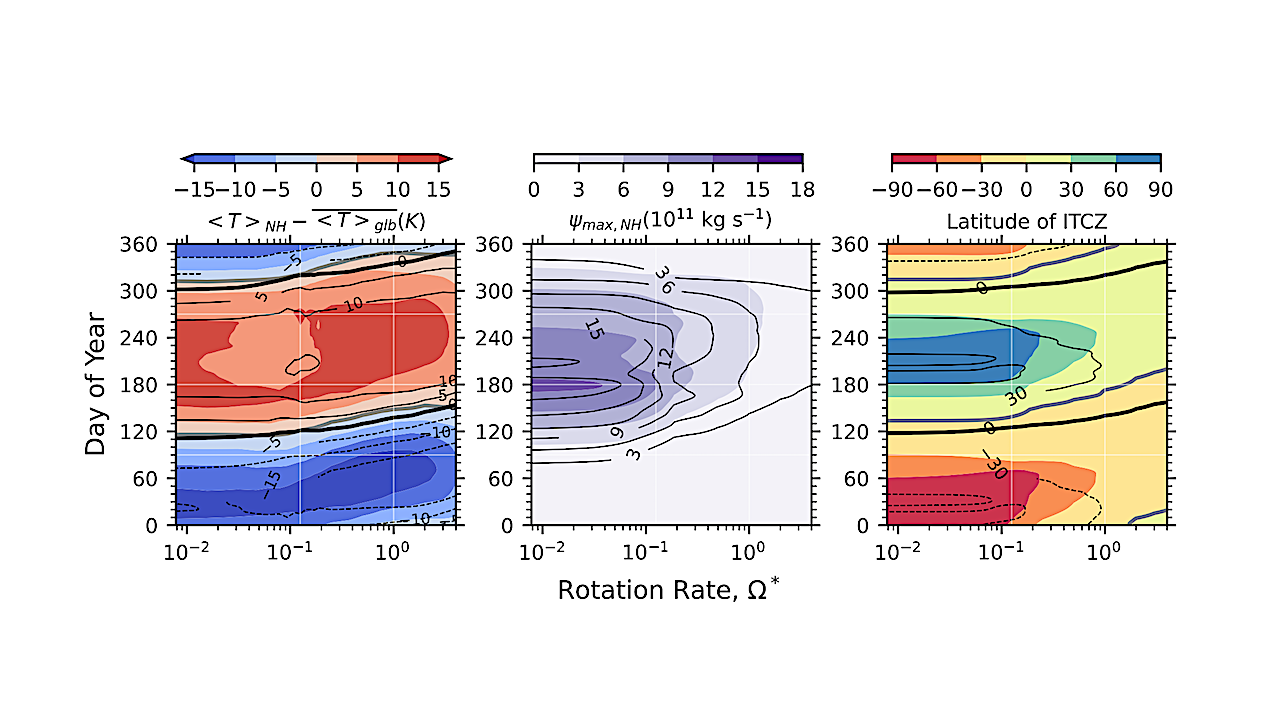Clouds And Seasonality On Terrestrial Planets With Varying Rotation Rates

Using an idealised climate model incorporating seasonal forcing, we investigate the impact of rotation rate on the abundance of clouds on an Earth-like aquaplanet, and the resulting impacts upon albedo and seasonality.
We show that the cloud distribution varies significantly with season, depending strongly on the rotation rate, and is well explained by the large-scale circulation and atmospheric state. Planetary albedo displays non-monotonic behaviour with rotation rate, peaking at around 1/2ΩE.
Clouds reduce the surface temperature and total precipitation relative to simulations without clouds at all rotation rates, and reduce the dependence of total precipitation on rotation rate, causing non-monotonic behaviour and a local maximum around 1/8ΩE ; these effects are related to the impacts of clouds on the net atmospheric and surface radiative energy budgets. Clouds also affect the seasonality.
The influence of clouds on the extent of the winter Hadley cell and the intertropical convergence zone is relatively minor at slow rotation rates (<1/8ΩE ), but becomes more pronounced at intermediate rotation rates, where clouds decrease their maximum latitudes. The timing of seasonal transitions varies with rotation rate, and the addition of clouds reduces the seasonal phase lag.
Daniel A. Williams, Xuan Ji, Paul Corlies, Juan M. Lora
Comments: 21 pages, 9 figures
Subjects: Atmospheric and Oceanic Physics (physics.ao-ph); Earth and Planetary Astrophysics (astro-ph.EP)
Cite as: arXiv:2402.04900 [physics.ao-ph] (or arXiv:2402.04900v1 [physics.ao-ph] for this version)
https://doi.org/10.48550/arXiv.2402.04900
Focus to learn more
Submission history
From: Daniel Alexander Williams
[v1] Wed, 7 Feb 2024 14:30:54 UTC (4,294 KB)
https://arxiv.org/abs/2402.04900
Astrobiology








